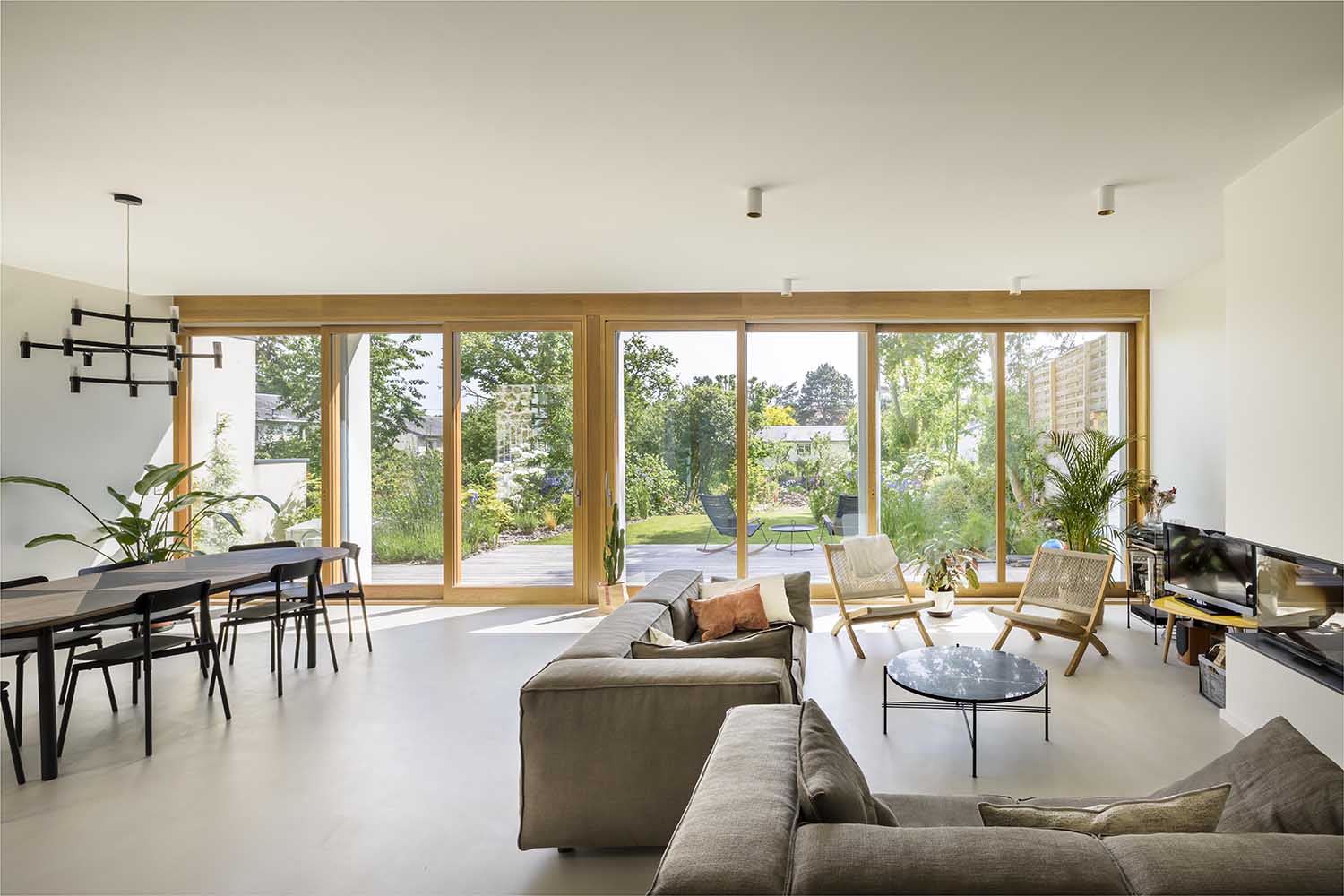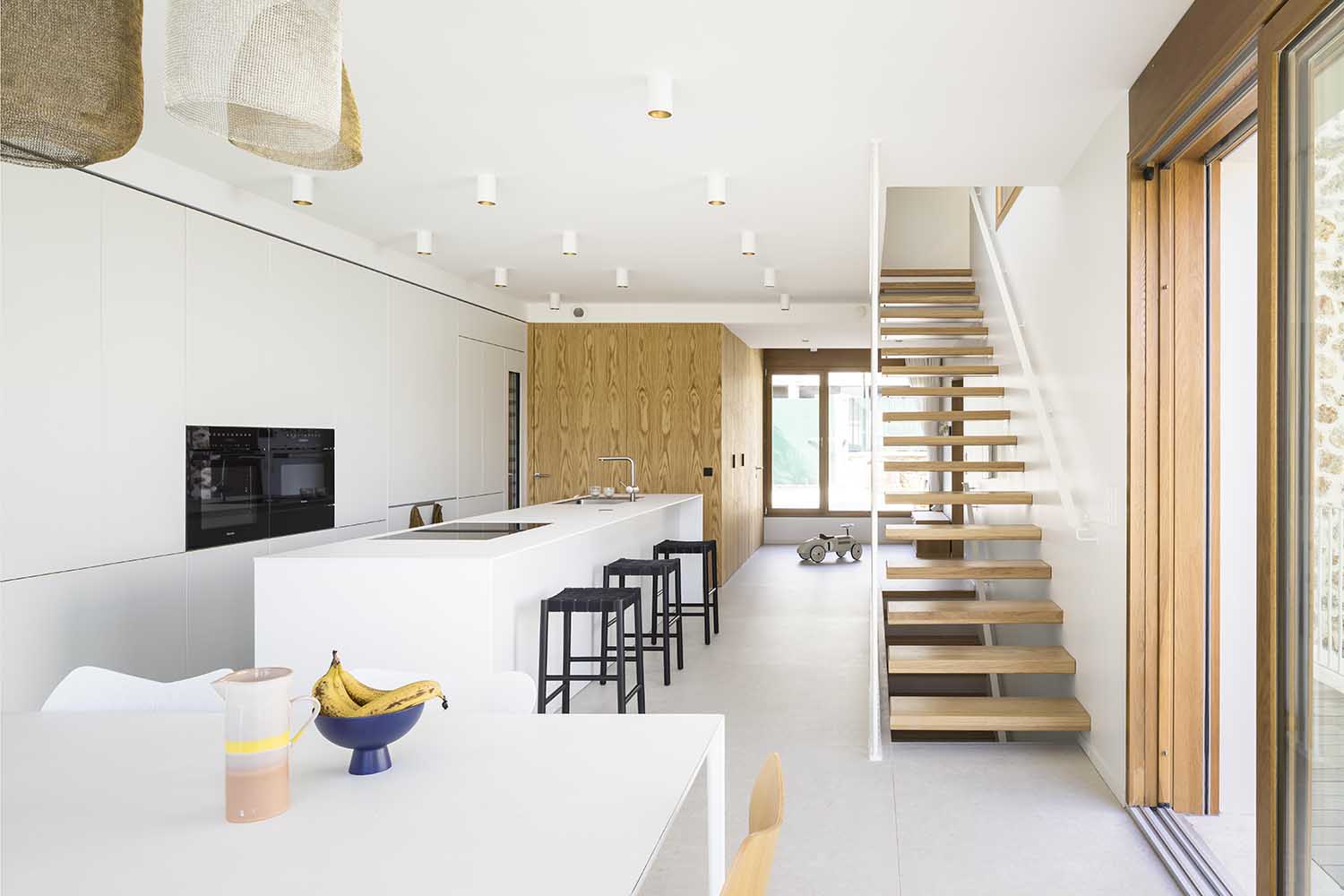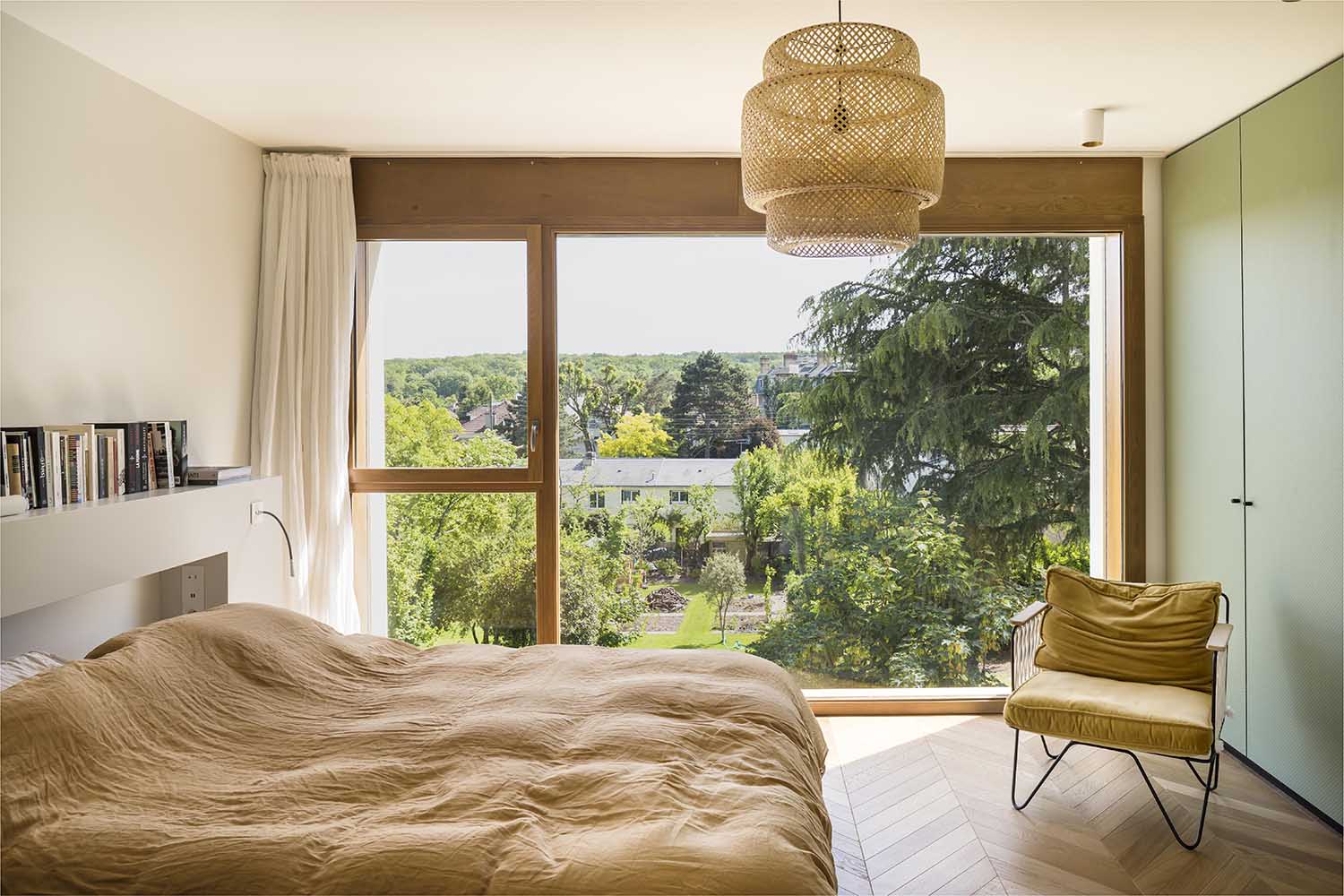
Imagine waking up daily in a home perfectly tailored to your unique needs and lifestyle. From the layout to the finishes, every detail reflects your style and enhances how you live. Sounds like a dream come true!
It doesn’t have to be out of reach. With some creative thinking and the right custom design approach, you can create a living space that feels like a natural extension of yourself. This comprehensive guide walks you through all the steps for designing a home that fully supports your lifestyle. Read on!
1. Work With The Right Team
Bringing your unique home vision to life requires collaborating with a talented team of design and construction professionals. Architects, interior designers, landscape architects, builders, and tradespeople contribute invaluable expertise.
An architect is essential for developing the overall concepts, creating technical drawings, and managing the building process. Seek out experts with experience in your desired aesthetic style and design approach. Also, engaging a landscape architect generates thoughtful outdoor environments. Beyond patios, pools, and gardens, they’ll shape intangible qualities like privacy, iconic views, and a sense of place.
Interior designers work wonders in curating furnishings, selecting finishes, designing color palettes, and weaving spaces together with beauty and cohesion. They excel at intelligent space planning, visual storytelling through materials, and maximizing every nook and corner.
Remember, clear communication and shared understanding amongst the team is vital. Outline your lifestyle goals, design inspirations, and personal aesthetics. Share conceptual images, set up collaborative mood boards, and remain open to new perspectives and ideas.
Do thorough research to find ideal contractors, such as Guardian Homes or others in your location. They can make your vision a reality, bringing every aspect to life. Professionals are also familiar with quality materials and will comply with the set zoning rules and codes.
Working with the right collaborators creates an iterative, co-creative process where the design organically evolves. Be patient, stay involved at each stage, and allow your vision to unfold authentically.
2. Understand Your Lifestyle
Before diving into the details or sketches, clearly define your lifestyle and vision for your dream home. This essential initial step establishes the creative vision and framework for all the design choices.
Consider the lifestyle you want to cultivate and where you hope to be in the foreseeable future. If you have a partner or family, include them in the discussions. The home should be a foundation for your life and your household’s collective needs.
Some key questions to explore:
- How do you hope to live day-to-day and spend your time?
- What kind of household environment do you want to create (quiet retreat, lively hub, or something in between)?
- How much entertainment, working from home, and occasions will you hold?
- Are there any specific design styles or atmospheres that draw you?
- What multi-functional spaces or bespoke spaces will enrich your habits and passions?
You’ll also want to carefully consider your budget and how the design will serve you in the future as your needs evolve. This guarantees optimal enduring worth and delight from the expenditure.
Gather inspiration by asking friends whose homes you admire about their process and outline priorities depending on the lifestyle you seek. Aim high while still grounding the vision to create a precise design blueprint.
3. Optimize The Floor Plan For Flow And Function
When designing your home’s floor plan, optimizing the layout for seamless flow and functionality is critical. It allows you to create spaces that support your lifestyle. Start by picturing how you want to live in your home and mapping out activity zones: where will your family gather, cook, eat, relax, sleep, work, and play?
Cluster complementary rooms in each zone for maximum daily convenience. For instance, locate the kitchen, often described as the heart of the home, in a central area open to the dining room or family room since it’s where families naturally congregate. Also, establish a clear delineation between public entertaining spaces and private personal spaces to create a sense of balance.
Thoughtful circulation patterns are equally vital. Avoid long, unnecessary hallways and ensure high-traffic paths don’t disrupt quieter zones like bedrooms. Minimize travel distances between frequently used rooms by connecting them.
Consider adding a secondary staircase for multi-level homes to ease movement between floors. If constructing a new home, explore intelligent home zoning, which allows independent temperature, lighting, and security control for active versus inactive areas, maximizing comfort and efficiency.
To optimize functionality, envision how you will live in and utilize each space. Focus on creating convenient logical connections that suit your family’s rhythms and activities. For instance, position the mudroom entry close to the laundry room and garage to simplify coming and going. Also, locate the master suite far from the kids’ rooms for privacy.

4. Embrace Natural Light And Connect To The Outdoors
Consider integrating a deep connection to nature when designing your home. Where possible, orient your main living spaces for optimal sunlight and views of the outdoors, whether a verdant landscape, water feature, or other pleasant scenery. This increased visual access to the natural world, even through windows, is restorative and reduces stress.
You’ll also want to maximize natural light throughout the home’s interior by incorporating expansive windows, sliding glass doors, skylights, and more. Quality windows with spectrally selective glazing can prevent glare, overheating, and ultraviolet damage while inviting ideal light in.
For exterior living areas like patios, decks, and porches, strive for seamless indoor-outdoor flow. Design shaded transitional spaces, double up on doorways, and use matching floors and details to tie the two together. Consider utilizing bi-fold, multi-slide, lift, or slide doors to open entire walls and create astonishing wide-open living.
To encourage bright, fresh, healthy living, utilize passive solar design strategies like cross-ventilation and airflow. A nature-connected home can uplift your whole environment, mood, and well-being when thoughtfully designed.
5. Personalize The Details
After locking in the overall layout and spatial planning, shift focus to personalizing your home through custom design details. This is where your unique style and personality can shine.
Whether your interior design style is sleek and modern, warm and rustic, artfully eclectic, or somewhere in between, create unique vignettes that showcase what you love. Built-in joinery is one way to blend form and function with bespoke flair seamlessly.
Design stunning floor-to-ceiling libraries with concealed media components, display areas to showcase your collections, custom closet systems with tailored organization, and integrated workspaces that maximize productivity.
Architectural features such as ceiling treatments, coves for concealed lighting, and decorative wall paneling also elevate spaces distinctively. Consider incorporating coffered ceilings, tray ceilings with accent colors, classic wainscoting, rustic shiplap, soft beadboard, or other specialized finishes that reflect your taste.
Creative use of color, geometry, texture, and contrast add further flair. For example, painting the ceiling with a slightly deeper or lighter tone than the walls creates subtle visual depth. Also, mixing modern and traditional materials and finishes can increase the design impact.
Additionally, incorporating special touches like statement fireplaces, window seats, showpiece lighting, and curated artwork ties the whole look together. Focus your creative energy on those thoughtful details that bring your lifestyle vision to life.
6. Optimize Home Environments For Enhanced Well-being And Safety
While stunning aesthetics are essential, selecting systems, products, and finishes that support your health, comfort, and safety are equally important. This is where practical functionality must align with your vision.
For ideal climate control, invest in an appropriately sized Heat Ventilation and Air Conditioning (HVAC) system that maintains your desired ambient temperature and airflow. Prioritize energy-efficient models and consider innovative capabilities for added convenience.
Quality air and water filtration are also essential. So, integrate whole-home humidification control, indoor pollutant monitors, fresh air intakes, or energy recovery ventilation for optimal indoor air quality.
Also, adopt a comprehensive outlook spanning insulation, circuitry, piping, and security for household protection and adaptability. For instance, raise outlets above potential flood levels, upgrade to meet modern capacity requirements, and install automated leak detectors for peace of mind.
Explore non-hazardous surfaces, coatings, and decor to promote wellness and eco-consciousness. Acoustics also influences well-being. Soundproof high-traffic zones, add absorbent materials to prevent echo, and design peaceful, quiet areas free of noise intrusion for an ideal auditory balance.

7. Future-Proof Your New Home
When designing your forever home, incorporate strategic elements that support graceful aging, changing needs, and energy efficiency over time.
For instance, embrace universal design principles that enhance accessibility and safety regardless of mobility or age. Consider level thresholds, wider doorways, easily adjustable shelving, and open layouts to support ease of movement. Also include structural backing in bathrooms for future grab bar installation.
Factor in flexible spaces that can gracefully adapt as family circumstances evolve. A study or bonus room can also transform into a nursery or in-law suite. Strategic wiring, plumbing, and electrical placement allow for seamless conversion.
Numerous tactics also exist for future-proofing energy efficiency and reducing environmental impact. Invest in high-performing spray foam insulation, triple-glazed windows, whole-home heat exchangers, and ductless heat pumps for superior climate control.
Consider installing rainwater capture and greywater recycling systems to reduce usage. Solar panels and battery storage can supplement electric needs through renewable generation.
8. Utilize Efficient Storage Solutions
Thoughtful storage solutions are crucial for maintaining an organized, clutter-free home that supports your daily needs. You can craft practical and custom storage spaces with creative planning while maintaining aesthetic appeal.
Consider built-in cabinetry and shelving to provide beautiful, seamless storage if you want many rooms. Custom bookshelves flanking a fireplace can store media equipment while displaying decorative items. A built-in window seat with lifts revealing hidden storage is charming and functional.
Also, install adjustable shelves, hanging rods, and drawer organizers tailored to your wardrobe and accessories. Incorporate unique details like a jewelry drawer with compartments, tie and belt racks, or display shelving for shoes and purses.
Multi-functional furniture maximizes utility. Consider an ottoman or bench with a hidden interior space to tuck away blankets: a coffee table or console with large drawers to neatly store remotes, chargers, and other devices.
The kitchen also provides clever possibilities, like pantry pull-outs, appliance garages to hide small appliances, and drawer dividers for utensils. Pot racks, plate racks, and glass door cabinets maintain an organized, clutter-free look.
9. Integrate Smart Home Technology
Incorporating smart home technology into your living space design can significantly enhance functionality, convenience, and efficiency. Consider customizing automated systems for lighting, climate control, security, and entertainment to support your household’s unique daily rhythms and needs.
For lighting, consider smart bulbs and switches that allow remote control and scheduling of illumination via voice commands or a smartphone app. Create scenes like “movie night” or “dinner party” with a tap that sets the perfect lighting mood and ambiance in each room. Geofencing features can also automatically turn lights on as you arrive home and off when you leave based on your phone’s location.
Smart thermostats learn your patterns and preferences, intelligently adjusting the temperature while you’re out to save energy. You can also adjust them to arrive home in ideal comfort while on the road. Advanced HVAC systems with zoned climate control let you customize conditions room-by-room.
Install features like smart locks on doors and windows that you can monitor and manage remotely to enhance security. Video doorbells and exterior security cameras with motion-sensing allow you to screen visitors and keep an eye on your home. Also, smart displays in the kitchen let you cue up recipes hands-free and stream shows or films on voice command.
10. Consider Cohesion And Continuity To Complete The Look
The final layer for pulling your home design together is establishing cohesion and continuity to unify the style and atmosphere.
An overarching design ethos such as minimalism, refined traditionalism, rustic coziness, or breezy seaside style creates cohesion. This helps tie each element together into a coherent vision. Your hues, textures, furnishings, accents, and artwork should enhance the prevailing theme.
Paying attention to proportion is also essential. The scale of furnishings and accents should align with the architecture and dimensions of each space. Simple tools like repetition, rhythm, and thoughtfully layering textures create powerful visual harmony.
Concentrating resources on high-impact areas like the kitchen, living room, and entryway generates a rich, immersive look. Spotlight those special wow-factor moments, like a statement light fixture or dramatic wallcovering.
Finally, those last fine details and styling touches make a house feel like home. Fresh flowers, books artfully stacked on coffee tables, cozy blankets and throws, meaningful collections and travel souvenirs, and cohesive gallery walls provide the final flourish of beauty.
Conclusion
Transforming your house into a home that mirrors your lifestyle and essence involves thoughtful consideration, creative expression, and strategic execution. Embracing the principles outlined throughout this guide, from understanding your lifestyle needs to personalizing each detail, empowers you to create a living space that accommodates your daily activities and inspires joy and well-being. Remember, the goal is to forge a space that resonates with your narrative, where every corner tells a story, and every room welcomes you with familiarity and comfort.
Images from Francilian House in Hauts-De-Seine by Hemaa Architectes – see full story here.



